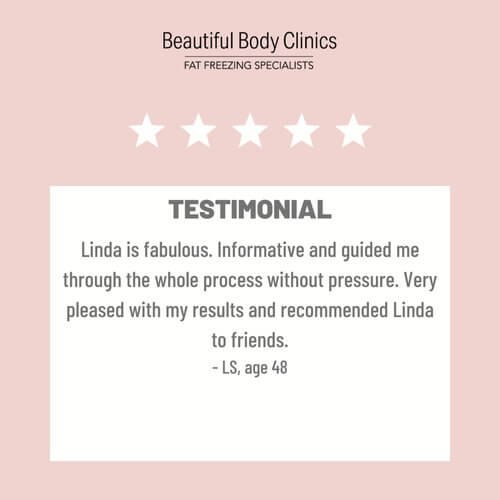
Skin Anatomy and Physiology - Lesson 101.
Introduction
Welcome back to high school Bioscience lesson 101. Whether you may or may not have been sitting at the back of the room writing notes to your crush, Linda (Founder of Beautiful Body Clinics) definitely had paid attention and taken notes on this matter while she was studying Bachelor of Nursing at Uni. And luckily, those information still hold true today.
Now for those who have not been taking class seriously, a revision is required in order to help you understand the different types of skin treatments and what you’re getting yourself into. Hence, we will provide you with a quick anatomy and physiology lesson. So here goes.
The cause of your problem: Aging skin
As we age, the natural production of collagen and elastin in the dermis diminishes, resulting in thinner, less hydrated skin and the emergence of fine lines and wrinkles. External aggressors like sun exposure, pollution, and lifestyle choices can also accelerate these changes, while factors like diet—insufficient hydration, essential fatty acids, vitamins, and minerals—and genetics also play a significant role in how your skin ages.
To effectively counteract these effects, skincare solutions must work beyond the surface, targeting the dermal layer to restore its thickness, improve hydration, and rebuild its structural integrity. Achieving youthful, resilient skin starts at the foundation."
Anatomy of the Skin: The layers
The thin, outermost layer of the skin. Composed mainly of keratinocytes (cells that produce keratin, a tough protein), melanocytes (produce melanin for skin color), Langerhans cells (immune response), and Merkel cells (sensation):
Acts as a barrier to environmental damage (UV radiation, pathogens).
Prevents water loss.
Provides pigmentation and initial immune defense.
The epidermis is then broken down further into the following sublayers:
Stratum corneum: Outermost, composed of dead keratinised cells that form a protective barrier.
Stratum lucidum: Found only in thick skin (palms, soles), provides additional protection.
Stratum granulosum: Keratinocytes begin to die and release lipids, aiding in water resistance.
Stratum spinosum: Provides strength and flexibility, contains desmosomes (cell connections).
Stratum basale: Bottom layer, where cell division occurs. Contains melanocytes and is attached to the dermis.
1. Epidermis (Outer Layer)
The thick layer beneath the epidermis, composed of connective tissue, collagen, and elastin fibers for strength and elasticity.
Houses blood vessels, lymphatic vessels, sweat glands, sebaceous (oil) glands, hair follicles, nerves, and sensory receptors.
Supports and nourishes the epidermis.
Regulates temperature via sweat glands and blood vessels.
Provides sensory perception through nerve endings.
Plays a role in immune defense and wound healing.
Sub-layers:
Papillary layer: Upper portion with thin collagen fibers; forms dermal ridges (fingerprints) and provides nutrients to the epidermis.
Reticular layer: Deeper portion with dense collagen and elastin fibers, supporting strength and resilience.
2. Dermis (Middle Layer)
3. Hypodermis / Subcutaneous Tissue (Deepest Layer)
The intermost layer of the skin, composed mainly of fat and connective tissue, contains larger blood vessels and nerves. The Hypodermis is where energy (Fat) is stored to provide:
Insulation for the body to regulate temperature.
Cushioning and protection for internal organs and muscles.
The Solutions
The treatments that we provide all stimulate the production of collagen and elastin fibres, which slowly decrease when we age and after exposure to sun and chemicals. The treatments encourage new cell formation which in turn speeds up the natural process of cells - from birth to death and desquamation (natural shedding).
All of the technologies we use stimulate the speed at which the lower-level stem cells (at the base of the epidermis) produce new healthy, happy and plump cells which gradually move to the upper layers - giving you a fresh, younger apperance. Our treatments also stimulate the Dermal Epidermal Junction - (DEJ) which creates the structural basis for skin. The firmer this area is the more surface area and exposure to hormones, oils and water which is need for younger skin. By keeping this area stimulated by our treatments (bio-microneedling, microneedling with Rf and Laser) you will be producing new healthy cells. It therefore remains firm - thus reducing the appearance of wrinkles and skin laxity. All of these treatments encourage cell turnover - creating a more youthful appearance. Management of acne, acne scarring, stretch marks and mild pigment conditions can also be treated.
Cell turnover
A 20 year old will experience new skin every approximately 28 days from when a new cell is created by the stem cells at the dermal layer to when they flake off (know as desquamation).
A 30 - 40 years old will take approximately 60 days for new skin
50 years and above - it take approximately 90 days plus for new cell turnover.
This is why anti-aging treatments like micro needling, laser and bio-micro needling are used and produce such amazing results. They stimulate the lower cell layers, thereby triggering the production of new fresh plump cells, collagen, and elastin fibres for a younger, youthful appearance.
Now, The Treatments:
-
Microneedling - using our Secret TGA approved microneedling with RF we guide the microneedles across the area for treatment - using a stamping motion. This creates hundreds of micro channels into the epidermal layers through to the DEJ. To create higher stimulation (than what the microneedles can create on their own )- the introduction of radio-frequency pulses create additional thermal injury to the cells. The body's natural healing and regenerative response occurs at this point and leaves you with fresh renewed rejuvenated skin. The microchannels created are open for 24 hours allowing better absorption of poducts applied after treatment.
After treatment - avoidance of sun exposure due to the potentail risk of Post Inflammatory Hyperpigmentation (the melanocytes which cause the dark tan colour) are reactive to the heat and stimulation.
Nubing cream (purchased over the counter from a pharmacy is recommended for this treatment.
Post treatment redness (urticaria) and warm flushed feeling usually resolves within 24 hours.
Microneedling is great for scars and large areas of stretch marks due to the depth that can be created with the device in order to break up the scar tissue and regenerate new structures.
-
A relatively new form of microneedling this is the introduction of millions of tiny spiclues (crystal like) structures from fresh water sea sponges. These are gently pressed and massaged into your skin and stimulate the prduction of new stem cells, which in turn push the old dying skin cells to the top. The micro-scopic injury also encourage the production of collagen and elastin fibres whilst increasing the thickness of the dermal layer, thus reducing the appearance of fine lines and wrinkles. With the new cells moving up through to the top layer the older cells fall off - (typically thought of as flaking - nut it called desquamation).
This treatment increases cell turnover and and such some flaking/dryness may occur.
-
The 1540nm non-ablative glass erbium laser which like microneedling creates thousands of channels into the layers of the skin producing tissue injury and thereby stimluating repair and the production of collagen and elastin fibres. Much like the micro-needling these channel are open for 24 hours after treatment. This laser is non-ablative meaning that the skin is not 'burnt" off as the frequency of the laser beam is attracted to water thereby creating thermaly injury through heat production in the cells and interstitial space between the cells. The formation of new cellls and the production of collagen and elastin occurs much like micro-needling.
After treatment - avoidance of sun exposure due to the potentail risk of Post Inflammatory Hyperpigmentation (the melanocytes which cause the dark tan colour) are reactive to the recent heat and stimulation.
Post treatment redness (urticaria) and warm flushed feeling usually resolves within 24 hours.
Laser is great for increasing the thickness of the skin , and is great for small frequent areas - scars and large areas of stretch marks due to the depth that can be created with the device in order to break up the scar tissue and regenerate new structures.
Which Treatment Is Right For Me?
-
With Micro-needling, there is more control over penetration depth and the added RF microcurrent makes it a more aggressive, intense, yet effective treatment.
However, because of the intensity, in most case, the treatment does require the application and purchase of numbing cream prior to treatment.
-
Bio-micro needling is a fantastic first step introduction into skin treatments due to the easy application (like a facial) and its ability to provide a beautiful overall rejuvenation.
The microchannels are proven to stay open for up to 72 hours, allowing deep penetration of applied ingredients.
Because there is no heat involved in this treatment, it does not in itself create pigmentation, therefore, is suitable for clients with melasma.
However, the redness and discomfort post treatment can last a little longer than other treatments.
-
The biggest benefits of laser skin treatment are its ability to rapidly treat a full area and the short-lived discomfort post treatment.
Furthermore, there is no needles or blood involved in the procedure, therefor, it is recommended for those who are nervous about the invasiveness of cosmetic skin treatments.
Smaller areas (think crows feet or marionette lines) can easily be treated in a 10 minute appointment. Laser it also great for increasing skin thickness to reduce crepiness.
We recommend that you speak to our clinicians so we can assess your current skin conditions and understand your desired outcomes to advise you with the most suitable treatment.
JUST STARTING ON YOUR SKIN CARE JOURNEY?
it is important to remember that our skin ages everyday. The production of new skin cells starts to slow down, the natural process of shedding dead cells (desquamation) becomes less efficient, and the generation of collagen and elastin—responsible for the skin’s strength, elasticity, and youthful appearance—declines over time. These factors contribute to visible signs of aging, such as fine lines, dullness, and loss of firmness.
To address these changes, we often recommend looking at a personalised skin journey. While significant improvements can sometimes be seen after just a single treatment, radical and lasting results typically require a series of treatments. Visible changes may appear within days, but deeper structural changes, such as increased collagen production, can take several months to fully manifest. For optimal results, a course of three to four treatments is often ideal to rejuvenate the skin, restore its vitality, and promote a healthier, more youthful appearance. After completing the initial course, maintenance treatments—either biannually or more frequently, depending on your needs—are recommended to sustain and enhance the results.
We suggest that you attend a consult with our clinicians to assess your current skin condition and understand your desired outcomes, allowing us to create a personalised treatment plan tailored to your unique needs and long-term goals.
What Our Clients Say
Every Time We Flatten a Belly We Fatten a Belly!
Buy1Give1 is a social enterprise on a mission to create a world full of giving. Beautiful Body Clinics is a proud member of B1G1, and giving is a part of our company culture and mission. We want to make people feel fantastic, near and far. We commit that every time we flatten a belly, we also fatten a belly. If you would like to know how your business can get involved please contact linda@beautifulbodyclinics.com.au
Giving is easy through B1G1 and 100% of the money your business or employer donates gets to the people in need.













